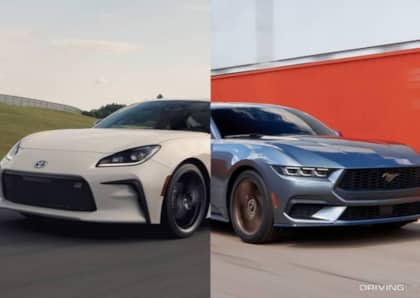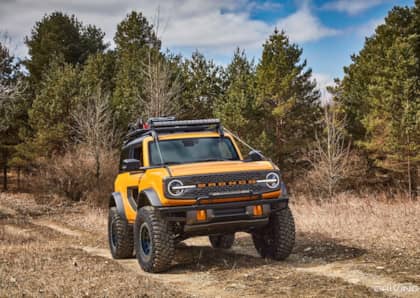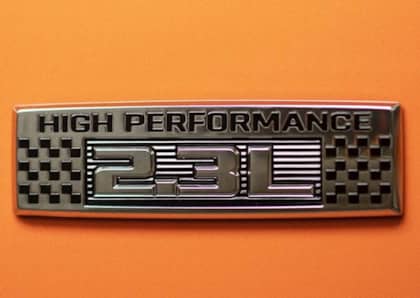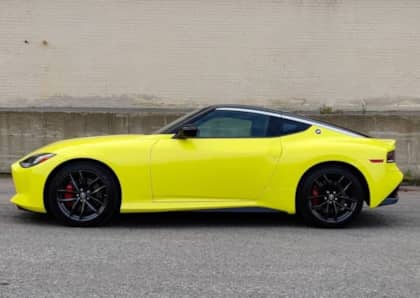These Modern Turbo Motors Beat Their Mighty Muscle Car and 4x4 V8 Ancestors
The march of technology is relentless, and this is just as true in the world of muscle cars and off-road rigs as it is for smart phones and tamagotchis. In 2020, it's possible to walk into a dealership and drive home with a turbocharged four-cylinder engine that will shame a long list of V8 engines that came before it. Features like direct injection, better computer controls for engine and boost management, and much improved tire compounds and transmission programming and gearing have made a major dent against the brute force approach of old.

In many cases, that little turbo 4 is sitting in a descendent of one of yesteryear's muscle machines or 4x4s, adding insult to injury when comparing stock power across the decades. Which turbocharged engines are doing the best job of leaving old school V8s in the dust? Check out this trio of high tech modern marvels that are more than capable of beating up on their eight-cylinder ancestors.
2020 Ford Mustang EcoBoost w/ High Performance Package
Ford made waves just a few short years ago when it introduced the turbocharged 2.3-liter four-cylinder engine as a step up from its base V6 in the Mustang coupe and convertible. Flashforward to today and that six-cylinder is gone, leaving the four-cylinder as the standard motor for anyone seeking to slide in to an affordable version of the pony car.

Lest you think the EcoBoost 4 is anything like a consolation prize, consider that in base tune it provides a very healthy 310 horsepower and 350 lb-ft of torque. Step up to the High Performance package, however, and you benefit from a heart transplant that snags a different version of the 2.3-liter unit that was last seen in the rally fighter Ford Focus RS.

Stepping up to 332 hp and 350 lb-ft of torque, this is enough to shame the 4.6-liter V8 that was found in the 2005-2010 fifth-generation Ford Mustang GT, which was good for between 300 and 315 horses, and a maximum of 325 lb-ft of torque. Go back even further and it gets worse for the Mustang GT, whose fourth-gen numbers (260 horsepower) third-gen (305 hp in the Cobra) and even Fox performance figures (225 hp, 300 lb-ft of torque) are no match for the current EcoBoost.

In fact, you have to go back to the early 70s to find a V8-powered Mustang that can stand toe-to-toe with the High Performance EcoBoost, when the 428 Cobra Jet put down an (underrated) 335 horses and 440 lb-ft of torque. Still, door-to-door it's a safe bet that the current 'Stang's 4.9 second 0-60 time would keep it close to the CJ on the drag strip.
2020 Chevrolet Camaro Turbo
The Chevrolet Camaro has gone in more of a track-oriented direction with its fantastic 1LE suspension package, but that doesn't mean that its own entry-level turbo four doesn't pack a punch. The 2.0-liter found between the base Camaro's front fenders is rated at 275 horsepower and 295 lb-ft of torque, with the latter coming on at a low 3,000 rpm.

How does this compare against past versions of the muscle car? Starting in 1982, the third-gen version of the Camaro slogged through its decade of existence with smog-choked 5.7-liter small block V8s under its hood, and although torque was good—checking in at around 345 lb-ft by 1987, when fuel injection had been properly sorted—even its mightiest engine never crested 245 ponies, putting it in back of the turbocharged 2.0.

Even taking a look at the fourth-generation Camaro reveals a mismatch. Although early output from LT1-equipped cars was rated at 275 hp and 325 lb-ft of torque, its still a half-a-second behind the current four-cylinder turbo in the sprint to 60-mph. You'd have to snag a later LS1 car, what with its 305-310 horsepower rating, to try and keep up with a modern coupe.
2020 Jeep Wrangler Turbo
When the Jeep Wrangler's turbocharged 2.0-liter four-cylinder engine was announced, there was a bit of grumbling from longtime fans of the brand about the decision to make it automatic-only, not to mention the fact that four-banger Jeeps of old were known to be slugs.

Any amount of time spent behind the wheel of the current Wrangler Turbo, however, should quickly change even the most hardened critic's mind. With 270 horsepower and 295 lb-ft of torque on tap, the Jeep can reach 60-mph from a standing start in 7.6 seconds—not bad at all for a vehicle that's not designed for straight-line speed.

The real advantages of the turbo become obvious when comparing its output to past Jeep V8s. As a brand, Jeep never had a great track record with eight-cylinder engines in any of the CJ models that preceded the Wrangler, with a wimpy 125 horsepower 5.0 sourced from AMC the leading light in the CJ-8. Even looking at larger Jeep models like the Grand Wagoneer reveals a 140 horsepower 5.9-liter mill that barely beats the turbo four in the torque department.

Once the '90s rolled around, Jeep began to benefit from the V8 stockpile at parent company Chrysler, but they were never installed under the hood of the Wrangler, which continued to feature relatively modest six-cylinder power plants. You'd have to find an SUV like the Grand Cherokee 5.9 Limited, which provided 245 horses and 345 lb-ft of torque—still down on the turbo, but with enough twist to beat the new Wrangler in a heads-up race.
Curious about other unusual muscle cars? Check out these 10 alternative muscle machines that get lost in the shuffle.











